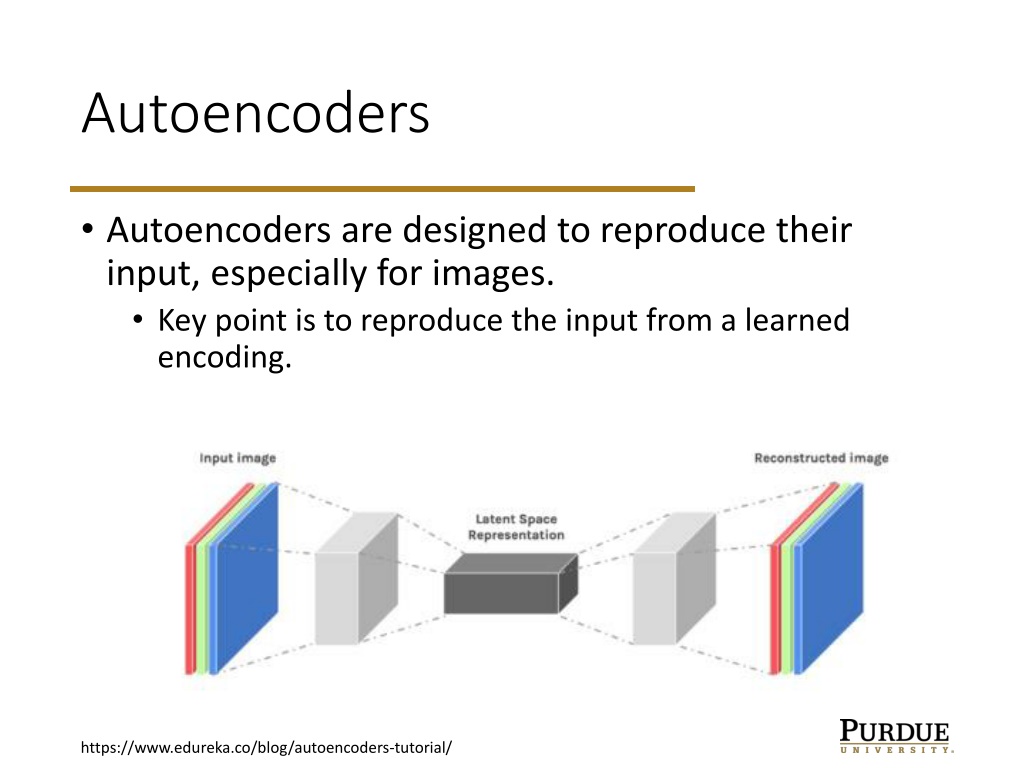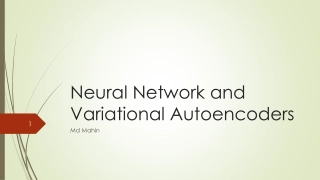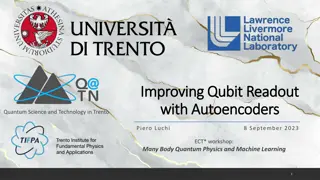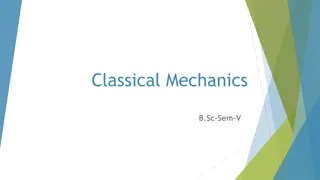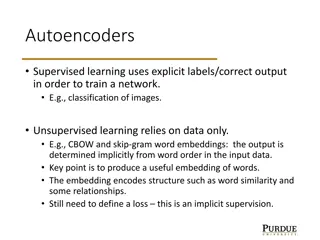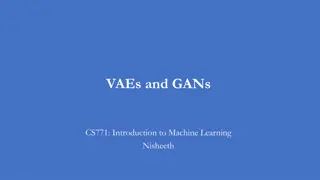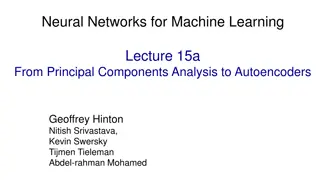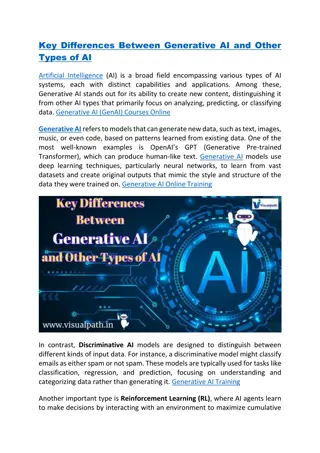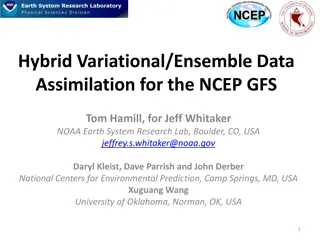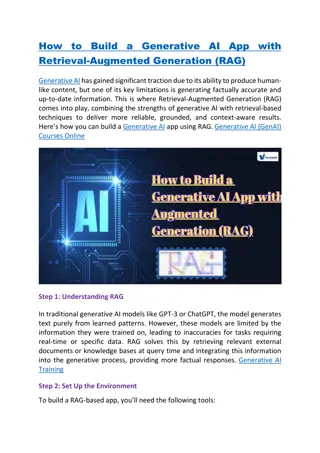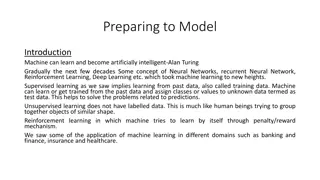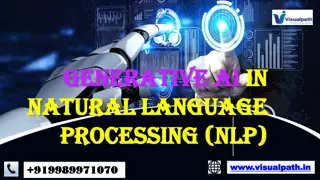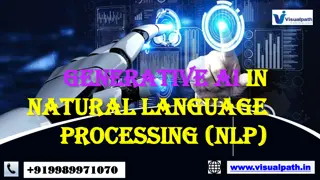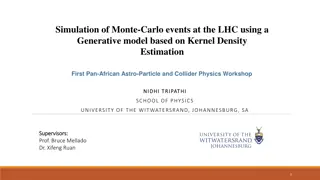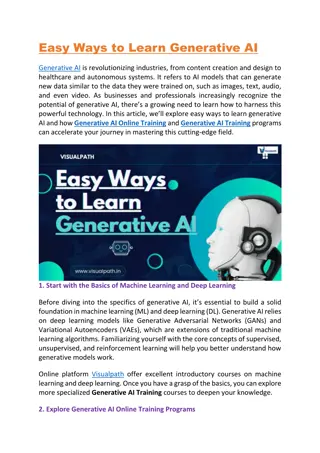Understanding Variational Autoencoders (VAE) in Machine Learning
Autoencoders are neural networks designed to reproduce their input, with Variational Autoencoders (VAE) adding a probabilistic aspect to the encoding and decoding process. VAE makes use of encoder and decoder models that work together to learn probabilistic distributions for latent variables, enabling the generation of meaningful lower-dimensional representations. The loss function in VAE ensures that the encoding remains continuous and does not simply memorize input data. By forcing the latent space to follow a standard normal distribution, VAE promotes diverse and meaningful representations of input data.
Download Presentation

Please find below an Image/Link to download the presentation.
The content on the website is provided AS IS for your information and personal use only. It may not be sold, licensed, or shared on other websites without obtaining consent from the author. Download presentation by click this link. If you encounter any issues during the download, it is possible that the publisher has removed the file from their server.
E N D
Presentation Transcript
Autoencoders Autoencoders are designed to reproduce their input, especially for images. Key point is to reproduce the input from a learned encoding. https://www.edureka.co/blog/autoencoders-tutorial/
Variational Autoencoder (VAE) Key idea: make both the encoder and the decoder probabilistic. I.e., the latent variables, z, are drawn from a probability distribution depending on the input, X, and the reconstruction is chosen probabilistically from z. https://jaan.io/what-is-variational-autoencoder-vae-tutorial/
VAE Encoder The encoder takes input and returns parameters for a probability density (e.g., Gaussian): I.e., gives the mean and co-variance matrix. We can sample from this distribution to get random values of the lower-dimensional representation z. Implemented via a neural network: each input x gives a vector mean and diagonal covariance matrix that determine the Gaussian density Parameters ? for the NN need to be learned need to set up a loss function. https://jaan.io/what-is-variational-autoencoder-vae-tutorial/
VAE Decoder The decoder takes latent variable z and returns parametersfor a distribution. E.g., gives the mean and variance for each pixel in the output. Reconstruction is produced by sampling. Implemented via neural network, the NN parameters ? are learned. https://jaan.io/what-is-variational-autoencoder-vae-tutorial/
VAE loss function Loss function for autoencoder: L2 distance between output and input (or clean input for denoising case) For VAE, we need to learn parameters of two probability distributions. For a single input, xi, we maximize the expected value of returning xi or minimize the expected negative log likelihood. This takes expected value wrt z over the current distribution of the loss https://jaan.io/what-is-variational-autoencoder-vae-tutorial/
VAE loss function Problem: the weights may adjust to memorize input images via z. I.e., input that we regard as similar may end up very different in z space. We prefer continuous latent representations to give meaningful parameterizations. E.g., smooth changes from one digit to another. Solution: Try to force to be close to a standard normal (or some other simple density). https://jaan.io/what-is-variational-autoencoder-vae-tutorial/
VAE loss function For a single data point xi we get the loss function The first term promotes recovery of the input. The second term keeps the encoding continuous the encoding is compared to a fixed p(z) regardless of the input, which inhibits memorization. With this loss function the VAE can (almost) be trained using gradient descent on minibatches. https://jaan.io/what-is-variational-autoencoder-vae-tutorial/
VAE loss function For a single data point xi we get the loss function Problem: The expectation would usually be approximated by choosing samples and averaging. This is not differentiable wrt ? and ?. https://jaan.io/what-is-variational-autoencoder-vae-tutorial/
VAE loss function Problem: The expectation would usually be approximated by choosing samples and averaging. This is not differentiable wrt ? and ?. https://nbviewer.jupyter.org/github/krasserm/bayesian-machine-learning/blob/master/variational_autoencoder.ipynb
VAE loss function Reparameterization: If z is ?(? ??, ??), then we can sample z using ? = ? ?? + ( ??) ?, where ? is N(0,1). So we can draw samples from N(0,1), which doesn t depend on the parameters. https://nbviewer.jupyter.org/github/krasserm/bayesian-machine-learning/blob/master/variational_autoencoder.ipynb
VAE generative model After training, is close to a standard normal, N(0,1) easy to sample. Using a sample of z from as input to sample from gives an approximate reconstruction of xi, at least in expectation. If we sample any z from N(0,1) and use it as input to to sample from then we can approximate the entire data distribution p(x). I.e., we can generate new samples that look like the input but aren t in the input.
